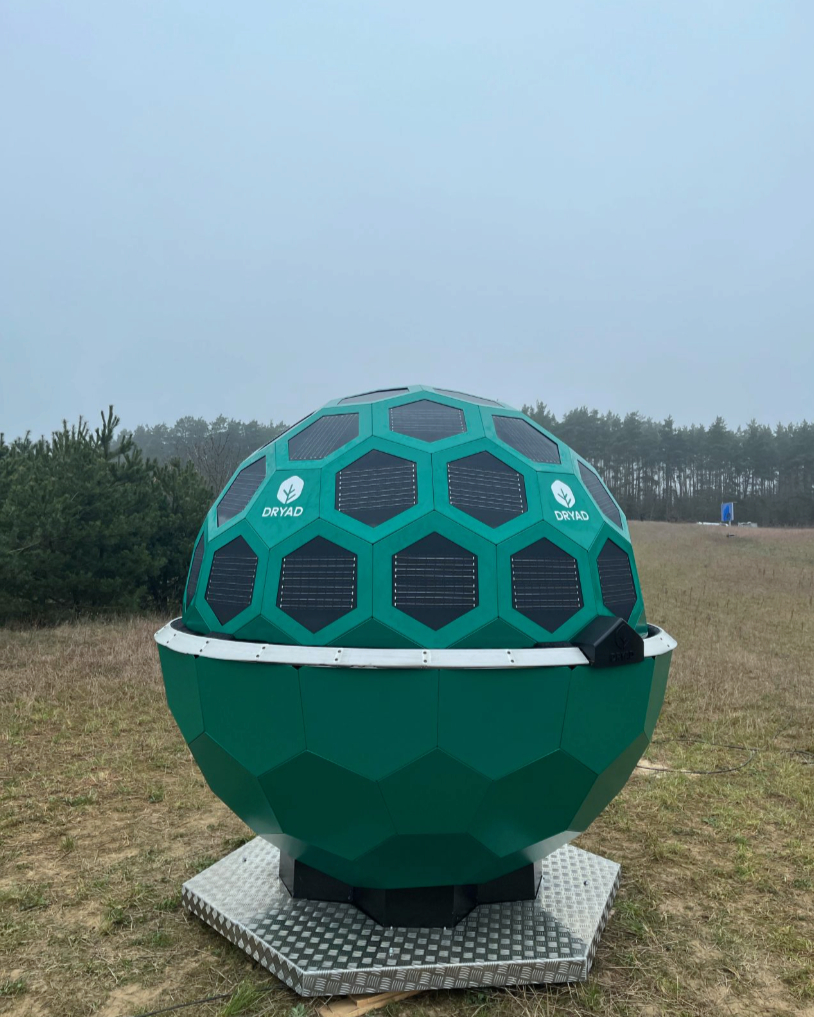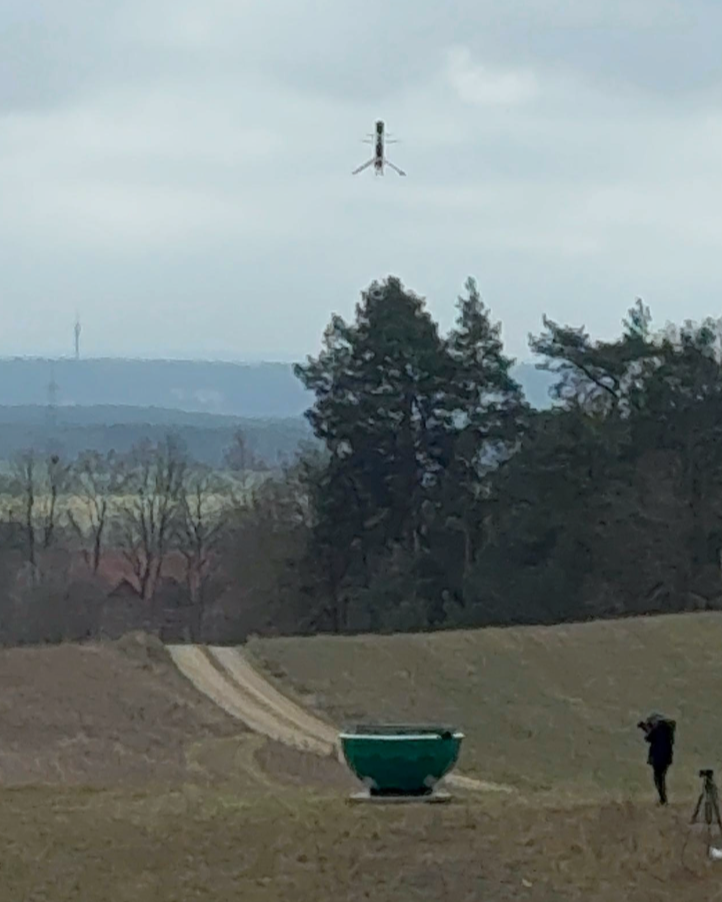Enabling Drone-based Autonomous Wildfire Suppression
How Skycharge’s Contact-Based Docking and Charging Technology Powers Dryad’s Remote Drone System
The NX30 drone by Ascent AeroSystems, lands on Skycharge’s contact-based docking station—designed for fully autonomous, off-grid wildfire response.
Dryad Networks GmbH, a German environmental IoT company, set out to expand its wildfire detection network with autonomous drones capable of suppressing fires. To operate effectively in remote forests, these drones required a robust infrastructure for remote stationing, automated takeoff, landing, recharging, and redeployment—without human intervention.
Skycharge provided the ground infrastructure : a weatherproof contact-based docking system suitable for automated landings, and a contact-based charging system for fast, reliable power delivery to the drone battery. Dryad developed the drone hangar, oversaw the integration of the Skycharge system, drone platform, sensors, and mission platform.
Bottom line: Skycharge’s modular docking and charging solutions enabled Dryad to deploy a fully automatic drone wildfire suppression system in forests, where traditional infrastructure is unavailable and manual operations are not feasible
The Challenge: Building Autonomous Capability in the Forest
No Power Infrastructure: System had to operate off-grid
Autonomous Operation: Drones needed to land, dock, recharge, and takeoff again without human input
Environmental Exposure: Full outdoor reliability—rain, heat, snow, dust
Custom Hangar Requirements: Needed a simple to integrate yet flexible system that fits into Dryad’s hangar design
Low Maintenance: Must operate independently during fire season
Skycharge’s Contribution: Docking and Charging Infrastructure
Dryad managed drone selection, hangar development, and mission logic. Skycharge provided:
1. Contact-Based Docking System
Handles Imprecise Landings: Ensures automatic electrical contact upon landing
Weatherproof: Operates in unprotected environments
Compatible: Integrated seamlessly with Dryad’s custom hangar design
No Redesign Needed: Compatible with third-party drone and battery
2. Contact-Based Charging System
750W, 15A: Fast, high-current power delivery
Proven Interface: No moving parts, reliable in rain
Lightweight: Retrofit kit adds only 16 grams
Plug-and-Play: Easy install, no redesign needed
Integration & Collaboration
Dryad: Drone and system architecture
Skycharge: Pre-qualified, standardized docking + charging
Technical Support: Early-stage guidance provided for integration
Results & Operational Impact
↳Fully autonomous operation in remote forests
↳Reliable, weatherproof ground infrastructure
↳Simple integration and hence fast time to deployment
↳Transition from detection to automatic wildfire detection & suppression
↳Scalable architecture for service rollout
| Why It Worked: Skycharge’s Advantage | ||
|---|---|---|
| System | Key Function | Value Delivered |
| Contact Docking | Ensures automatic drone docking upon landings | Reliable automatic electrical connection between charger and battery (BMS) in all environmental conditions |
| Contact Charging | Automatic power delivery with high efficiency and safety | Remote fast charging without human intervention |
Broader Applications
Wildfire suppression
Emergency response
Infrastructure monitoring
BVLOS inspections
Conclusion: A Foundation for Autonomous Environmental Protection
Skycharge helped Dryad’s shifting from wildfire detection to automatic wildfire detection and suppression. Our robust, plug-and-play systems provided the needed ground infrastructure autonomy—laying the groundwork for scalable, tech-driven environmental response.
Success Highlights:
Contact-based docking & charging
Seamless third-party drone integration
Minimal development overhead
Weatherproof performance
Enabler for fully autonomous and remote missions





